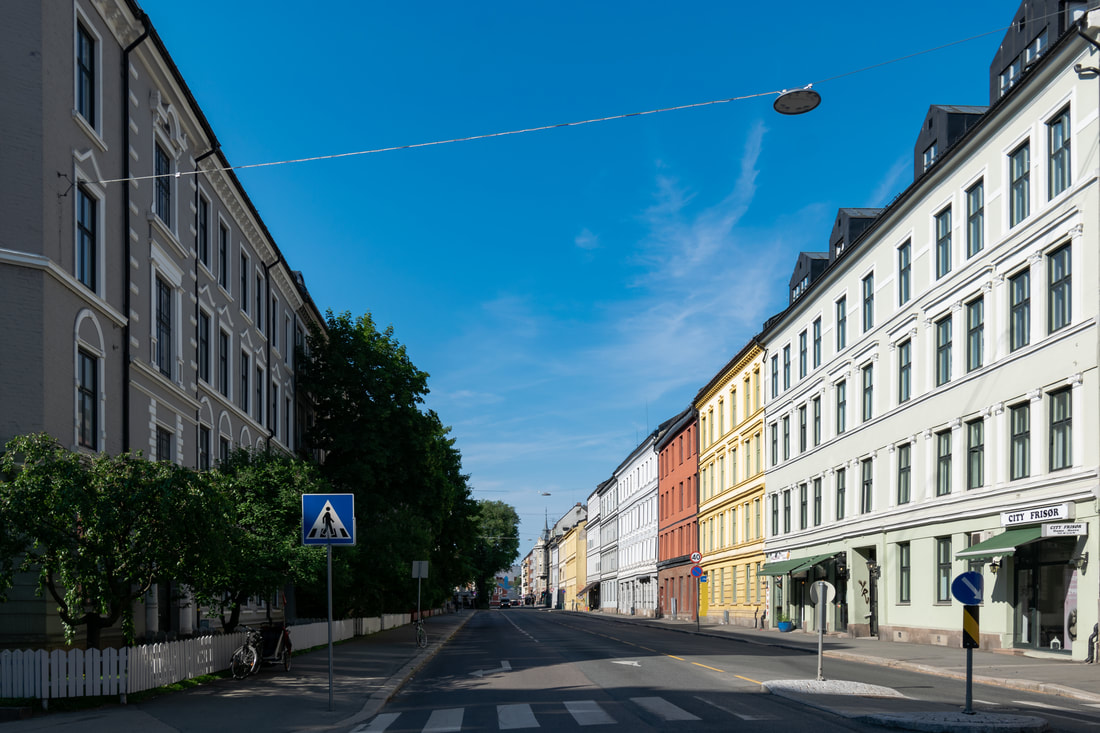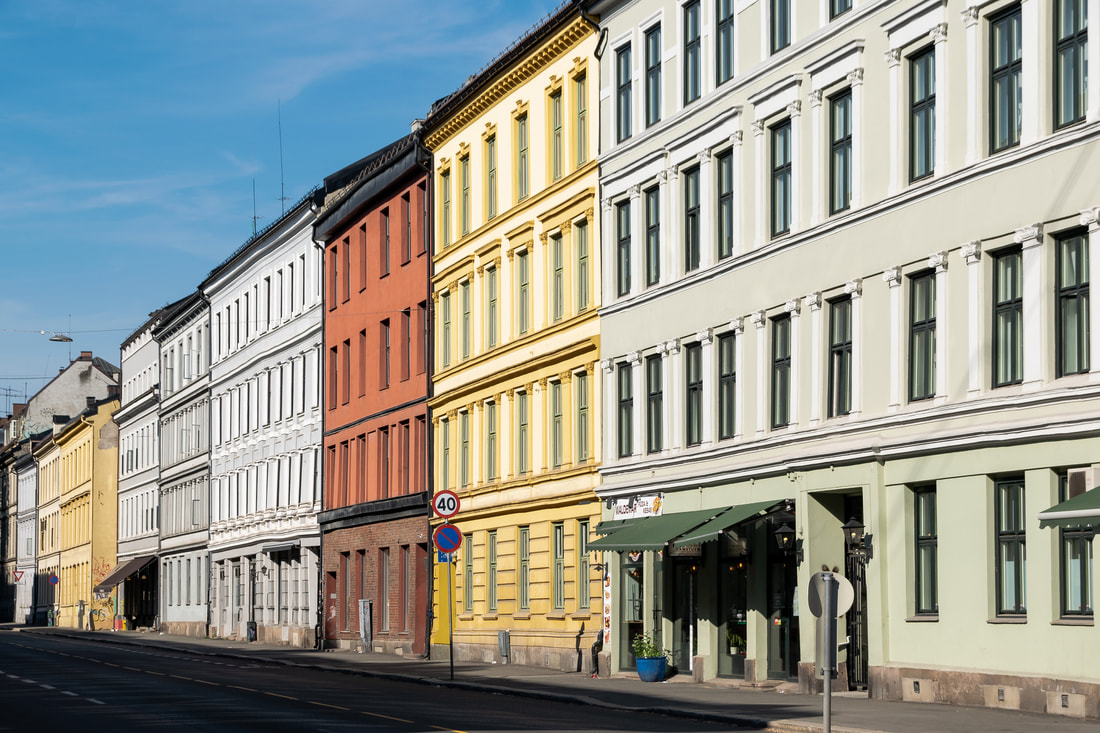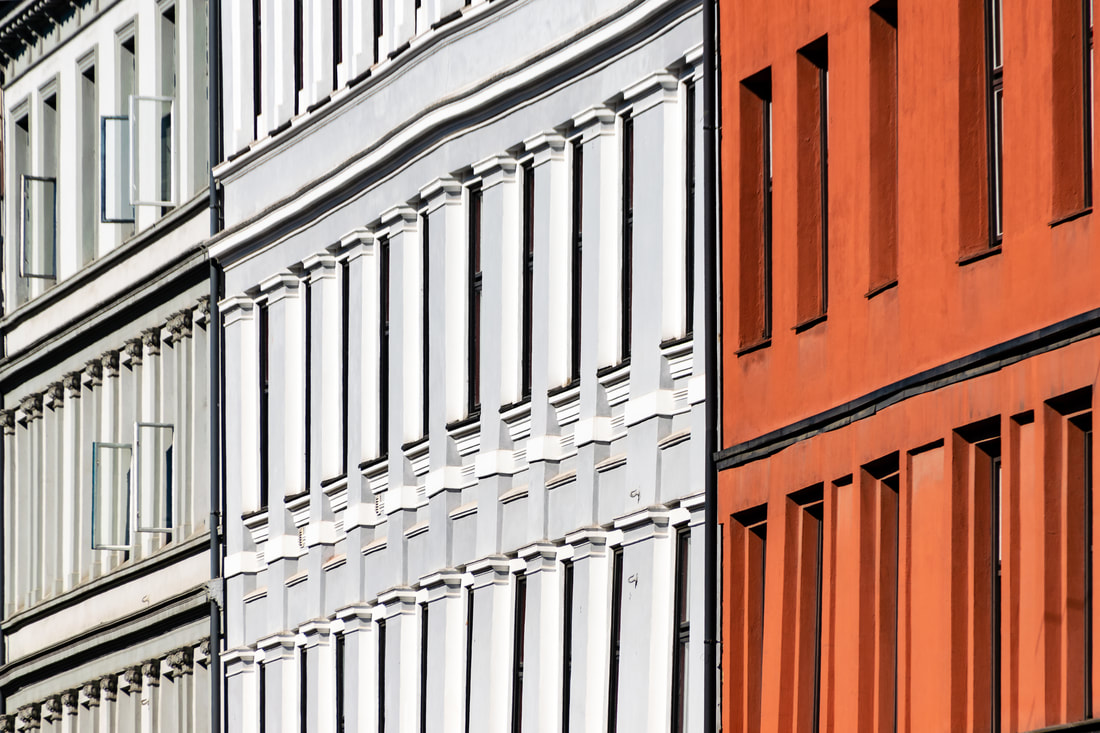If we want to see the street as a whole, then perhaps a traditional view is to look down the street from the center, like this street in the St. Hanshaugen neighborhood in Oslo, Norway.
A second way to capture the street and perhaps afford an edgier tone to the image is to shoot just one side of it.
Another option is to approach this in the same manner as abstract painters who seek to reduce the representational or documentary nature of an object by capturing it abstractly. Consider this:
The point is that when photographing you should be alert to the possibilities and effects that can be achieved by simply framing, without fancy image processing. You can take a purely documentary image or you can seek to capture something else by abstraction. You are also not limited to these three positions—storefront shots and shots showing just the door and some windows on the first floor are other options.
I’d be interested in comments on which shot strikes a chord, and how you seek to capture parts of a city like this when traveling.


